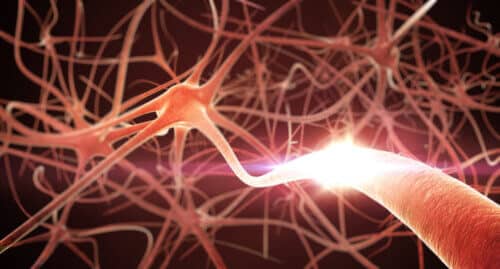Research led by Dr. Itai Rabinovitch from the Faculty of Medicine at the Hebrew University has now demonstrated that, at least in tiny worms, damaged communication between nerve cells can be restored by genetic means by implanting artificial connections in a completely biological manner

Nerve damage in the brain, following accidents, cerebrovascular events or various diseases, may impair human functioning in different and varied ways. The impairment can be manifested in the ability to move, speak, see, memory or cognitive function. Beyond the conventional treatments, there is currently a great effort to create 'brain prostheses', that is, to use electrodes, computers and robots to try to bypass injuries to the brain and spinal cord, and there are even already impressive successes. The disadvantages of these prostheses, beyond the high development cost, are mainly the patient's need to use and maintain complex external instrumentation. Research led by Dr. Itai Rabinovitch from the Faculty of Medicine at the Hebrew University has now demonstrated that, at least in tiny worms, damaged communication between nerve cells can be restored by genetic means by implanting artificial connections in a completely biological manner. The study, carried out in partnership with Dr. Jihong Bai of the Fred Hutchinson Cancer Research Center in Seattle, was published in the scientific journal Cell Systems.
The nerve cells, called neurons, transmit information to each other through connections called synapses. There are chemical synapses, which have a complex structure (including hundreds of different types of proteins), and there are electrical synapses, which are relatively simpler (made of one type of protein). After a nerve injury, disruptions in the flow of information may occur in the brain, because some of the neurons are missing. Several years ago, Dr. Rabinovitch developed in the laboratory of Prof. William Schaefer in Cambridge, England, a method that makes it possible to create new electrical synapses between neurons of the worm C. elegans (C. elegans) by genetic expression of the synaptic protein in these neurons. Today, Dr. Rabinovitch and his research partners were able to apply this method to overcome damage to the worm's nervous system.
"In order to simplify the problem, we focused on a relatively uncomplicated animal, the tiny worm C. elegans, which has only a few hundred nerve cells, in contrast to the tens or hundreds of billions of neurons in the human brain," explained Dr. Itai Rabinovitch. "We caused the worms to lose a specific pair of neurons and this resulted in a decrease in their ability to navigate towards attractive smells. To overcome the damage, we inserted new synapses into the neural network genetically, using the method I developed in Cambridge, and thus created a 'synaptic bypass' that would restore the flow of information in the neural network."
The synaptic bypass was successful, and the performance of the treated worms even exceeded that of normal healthy worms. "At the same time, we were surprised to find that an important part of the success unexpectedly resulted not only from the re-routing of the information in the network, but also from the general amplification of weak signals provided by the artificial synapses we built," added the researcher. The success of the experiment presented an innovative and futuristic approach, which hopefully one day can be translated into genetic treatment of diseases and injuries in the nervous system in humans, without the need for the use of electronic aids.
More of the topic in Hayadan:
